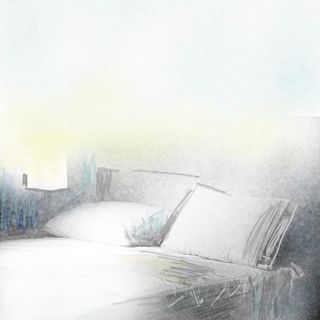Sleep
Whatever Helps You Sleep at Night
You think you know how your mind works, but you're probably lying to yourself.
Posted May 30, 2019

Most people have an erroneous idea about how their mind works. From believing memory is closer to a video recorder than a construction site, to believing your beliefs have been consistent through time, to believing there is a consistent sense of self, people generally have misconceptions about how the mind work. These misconceptions lead to an irrational trusting in one’s own thinking.
The malleability of memory has been well established. Elizabeth Loftus published her research in the 1970’s, and though at times it has been challenged, she has been awarded dozens of honors. Her initial work focused on language and memory, but later her work led to her being an expert on false memory. In short, her work and the work of those that have followed her has demonstrated the malleability of memory, and that it cannot be trusted.
In a recent podcast focused on belief change blindness, David McRaney discusses what the recent research of Wolfe and Williams demonstrates about individual’s memory of their own former beliefs. They designed an experiment which first was designed to change people’s “beliefs, and, then to check to see if those people realized that their beliefs had been changed” (McRaney, 2018). First participants answered questions about their beliefs in an online prescreening that occurred two to three months before they came in for the experiment. They would rate their belief about social science statements on a scale of 1-9. Examples of questions included their belief about spanking for discipline, and if watching violence on television makes people more violent. They would then create groups of near equal number with opposing beliefs. Scientific evidence was then provided which was counter to whatever belief the subjects held. (For example, if you believe spanking is bad for a child, evidence demonstrating how it can be effective was shown). They then answered questions regarding their belief again, and were asked to recall (by circling the corresponding number) the degree of their belief months ago (in the prescreen test).
The results of this experiment (and others that followed by the same researchers) are “the first to indicate that when people change their beliefs, they show biased memory for their previous beliefs” (Wolfe, M., Williams, T., 2018). In other words, they really don’t believe their beliefs changed, or at least not as much as they did. “We tend to construct memories that a) are based on who we are now, and what influences are pressing on us at the moment, and b), that tend to paint us in the light we wish to be seen in at that moment” (McRaney, 2018). McRaney goes on to say Wolfe and Williams have demonstrated the same memory bias / error in recalling beliefs.
Experimental activities that demonstrate the brain doesn’t work the way one thinks it does, come from studies where the brain is split, or there is damage to the right hemisphere, such as in a stroke. A peculiar example of this is provided in the podcast Hidden Brain, in the episode “One Head, Two Brains”. In this scenario, psychiatrist Iain McGilchrist describes what happens when a patient with a right hemisphere stroke is asked to move his arm. “So if you have a paralyzed left arm, which is often a consequence of right hemisphere stroke, more often than not you will deny that there's any problem with it. If asked to move it, you will say, ‘there’: but it didn't move” (Vedantam, 2019). In this scenario the patient is not looking at his arm. He goes on to describe what happens if the doctor puts the arm in front of the patient and asks, “whose arm is this, can you move it, they say, oh, that's not mine. That belongs to you, doctor, or to the patient in the next bed” (Vedantam, 2019). As can be seen, the patient is providing a creative explanation for seeing an arm he can’t imagine is his (as the left hemisphere is largely responsible for details, and the right the whole picture).
Experiments with split-brain patients show similar results. In another “You’re Not So Smart” podcast, McRaney discusses an experiment where Joe, the first split-brain surgery recipient, is shown in his left field of vision (right hemisphere) the word “bell”, and in his right field of vision (left hemisphere) the word “music”. They then ask him to choose an image from four images, a person playing a trumpet, a person playing a drum, an organ, and a church with a bell tower. “When asked to point to what he saw with his left hand, he chooses ‘Bell’” (McRaney, 2018 [2]). It is important to understand language is predominately produced in the left hemisphere, so Joe’s right hemisphere doesn’t know why his hand pointed to the picture of the bell. In the most interesting part, and the point I am making about the mind, when asked to explain why he chose the picture of the church, Joe says (instead of “I don’t know” which would seem logical) “Music. And bell. The last time I heard any music was from the bells out here banging away” (McRaney, 2018 [2]). McRaney explains, “Since the other images are more connected to music then bell, Joe’s left brain interpreter had to come up with some story about why he chose bell that made sense. Michael Gazzaniga, the neuropsychologist who worked with Joe and is considered a leading researcher in cognitive neuroscience, refers to the right hemisphere as the “left brain interpreter” (McRaney, 2018 [2]).
In another split brain example I’ve used before (and likely one of my favorites), a subject is shown the word “Walk” to his right hemisphere. When he gets up to walk, his left hemisphere doesn’t know why, but when asked, he provides a reasonable explanation (though not the truth, yet he believes it to be). The explanation one subject gave was “to get a soda” (Wright, p.79).
You might be thinking, sure, this happens with people with brain damage or brain surgery. But plenty of following experiments seem to show similar phenomena in people with healthy brains and minds. The takeaway is we often, and without knowing, create stories for what we do, and believe them wholeheartedly. This is called confabulation.
I’ve heard people say, “whatever helps you sleep at night”. This is usually said when what they think differs from what the other thinks, and they think the other is lying to himself to make himself feel better. I wonder if people who say this realize how correct they are, but also how it applies to them. Everyone is creating stories to support their sense of self, and to support the illusion the self is consistent (for more on this, see “You aren’t you at all”).
As McRaney’s entire volume of podcasts implores, as Mark Manson suggests in his best-selling book (The Subtle Art of Not Giving a F*ck, and as I’ve suggested in most of my writing: people would benefit from creating some doubt about their thinking. Trust it less. Stop being so attached to what you believe and think. You are making most of it up anyhow.
Copyright William Berry, 2019
References
Manson, M; 2016; The Subtle Art of Not Giving a F*ck; Harper Collins Publishers; N.Y; New York
McRaney, D., 2018., 124 Belief Change Blindness., You Are Not So Smart podcast., Retrieved from: https://soundcloud.com/youarenotsosmart/124-belief-change-blindness
McRaney, D., 2018 (2)., 125 Status Quo Rationalization., You Are Not So Smart podcast., Retrieved from: https://soundcloud.com/youarenotsosmart/125-status-quo-rationalization
Vedantam. S., 2019., One Head, Two Brains., Hiddne Brain podcast., Retrieved from https://www.npr.org/templates/transcript/transcript.php?storyId=6906564…
Wolfe, M., Williams, T., 2018., Poor metacognitive awareness of belief change., Quarterly Journal of Experimental Psychology., Retrieved from: https://journals.sagepub.com/doi/10.1080/17470218.2017.1363792
Wright, R., (2017), Why Buddhism is true., Simon and Schuster, N.Y., New York.




